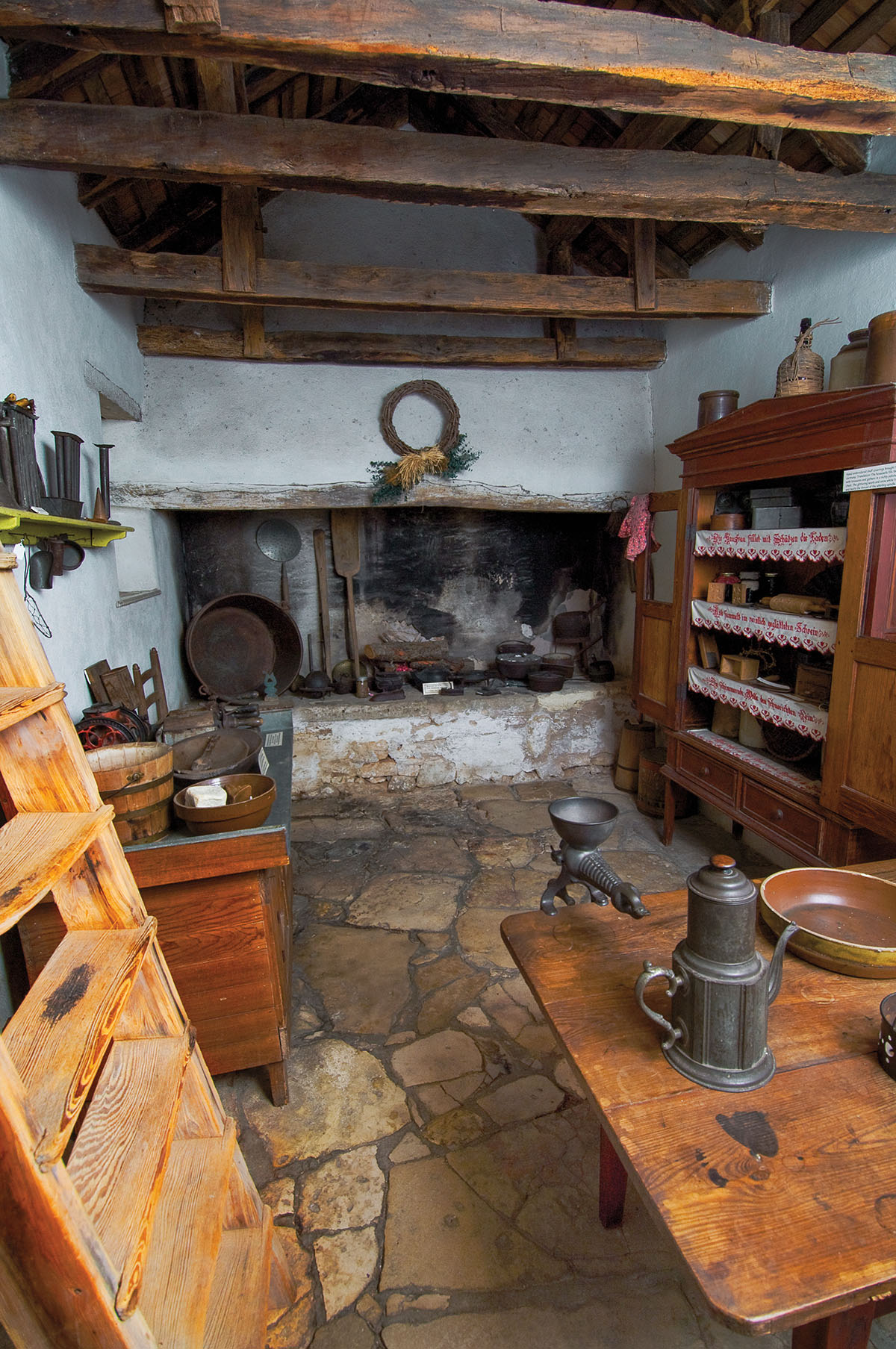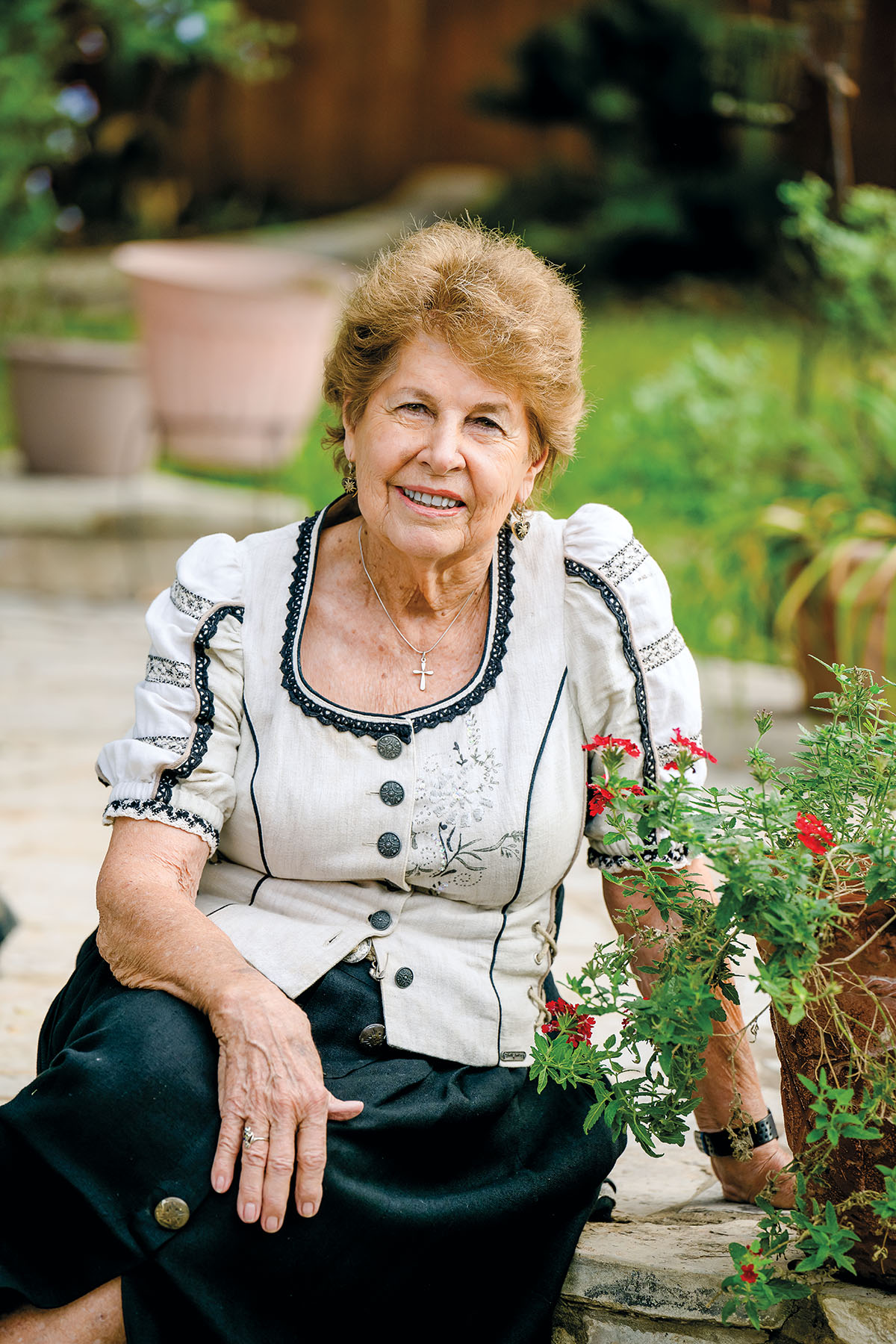
Fredericksburg’s Pioneer Museum serves as a hub for education about German history in Texas. Photo by Randall M. Maxwell
Toward the end of a long drive from California to Austin in 2001 to start a new job as a German linguistics professor, Hans Boas stopped at a Fredericksburg café for a meal. As he sat in the restaurant, he overheard a group of older gentlemen speaking German.
“It was a German I had never heard before,” recalls Boas, who’s originally from the German city of Göttingen. “I stood there for a minute and listened, and I thought, this is so bizarre. Where are they from?”
He approached the table and, in German, asked them just that. “They looked at me in disbelief,” he says. “They’re like, ‘What do you mean? We have lived here all of our lives.’”
Boas followed up with a trip to the University of Texas at Austin’s Perry-Castañeda Library, where he found scant research on Texas German—a dialect spoken by Germans who settled in Central Texas. But he learned enough to know the dialect was declining, as speakers had stopped passing the language to their children. He bought an audio recorder and conducted a few interviews with Texas German speakers.
“I was hooked,” says Boas, who founded the Texas German Dialect Project at UT in 2001. “I noticed that Texas German was very unique in a whole number of different respects. It was not just that it had certain properties that many other German dialects don’t have. After the first few months of listening to the interviews, I found out that basically none of the speakers spoke alike.”
The language is a mix of multiple German dialects from different places in Europe, Boas explains. Speakers share some intonational patterns, such as a blending of the English and German diphthongs—house and haus, for example. But even members of the same family can speak the language differently.
In Texas German, skunks were labeled stinkkazte, or stinking cats. The advent of aircraft inspired Luftschiff, or air boat. And the fences dissecting the landscape received a straightforward treatment—die Fenz.
“There are several words for fence in German, like a rock fence or a hedgerow,” notes James Kearney, a historian at UT who studies 19th-century European immigration to Texas. “But these words had associations that didn’t apply at all to the situation in Texas. So they adopted the American word for a third type of fence—a Texas fence out on the prairie.”
In the 1800s, thousands of Germans immigrated to Texas and brought with them a host of cultural and political traditions that harkened to their homeland. But as they moved in among the prairies and hills, the new arrivals encountered novelties unknown to their mother tongue and created new words to describe them.

Diane Moltz learned Texas German from her parents while growing up on a farm outside Seguin. Photo by Tiffany Hofeldt
Such adaptations characterize Texas German, starting with the arrival of native Germans and evolving across the years into a dialect that is renowned for its persistence and diversity. About 14% of Texans have German heritage, Boas says. With Texas German expected to die out in the next five to 10 years as the last speakers age, academics and historians have worked to study the dialect and understand its relevance in linguistics and Texas history.
Boas’ first interviews were the seeds for an archive that today contains over 900 interviews conducted by Boas and his students, mostly in the “German Belt.” Fleeing political turmoil and drawn by available land, German immigrants in the 1800s settled primarily in Central Texas within a perimeter linking Dallas, San Antonio, Houston, and Fredericksburg.
In addition to providing a remarkable account of Texas German culture, the project’s interviews reveal a wide range in Texas German. Speakers’ dialects vary depending on factors including location, incorporation of English, and social background.
“You could say there’s a bunch of speakers of different varieties of Texas German across Texas,” Boas says. “It’s a very interesting facet of language variation. Of the languages and dialects that I know of, this seems to be one of them with the highest degree of variation.”
Diane Moltz of New Braunfels was one of the Texas German speakers interviewed for the archive. Born in 1940, Moltz grew up in the German community of Zorn, about 15 miles north of Seguin, on a farm settled by her great-grandparents. Her father was a Voss whose family immigrated from Germany in the 1870s. Her mother’s family, the Schwabs, arrived in Texas in 1845 and settled outside New Braunfels with colonial agent Prince Carl of Solms-Braunfels.
Moltz’s grandparents spoke little English, and the family recognized German customs, such as Saint Nicholas Day during the Christmas season.
“I spoke German as a little child, and I must’ve learned English simultaneously,” she says. “But my mother was very insistent that we spoke German, and she spoke it all the time. She said, ‘You will learn German because it’s going to be good for you to know another language.’”
Moltz’s generation was among the last to learn German at home. The advent of radio, railroads, and cars all chipped away at the prevalence of the dialect. During World Wars I and II, Texas German speakers were stigmatized, despite sending family members to the front lines.
“When my mother was in school growing up, they were taught in German,” Moltz says. “And then when World War I started, they were suddenly forbidden to speak a word of German. She said it was like somebody cut off her tongue. She didn’t know a word of English.”
Texas German hit its peak in about 1940 with approximately 160,000 speakers, according to the Texas German Dialect Project. That number has declined steadily, and the last people to learn Texas German at home were born in the late 1940s and early 1950s, Boas says. The COVID-19 pandemic took a heavy toll on the surviving speakers, and Boas’ ballpark estimate counts a maximum of 3,000 speakers today.
The German Belt
In Fredericksburg, the Pioneer Museum preserves a collection of 10 historic buildings that portray German farming life, including homes, a one-room schoolhouse, and a smokehouse.
pioneermuseum.org
In New Braunfels, the Sophienburg Museum tells the story of the German immigrants who settled New Braunfels in 1845 and their contributions to the cultural heritage of their Texas home.
sophienburg.com
In Comfort, the Treue Der Union Monument honors the 36 German unionists killed in August 1862 by Confederate soldiers. The Germans were fleeing to Mexico because of their opposition to the Civil War.
texastimetravel.com
In Austin, Scholz Garten has been a German hangout for food and drink since 1866. Next door, Saengerrunde Halle is the historic home of the still-active Saengerrunde German choir and a bowling alley.
scholzgarten.com; saengerrunde.org
As Texas German has faded, the Texas German community has shown little interest in perpetuating the language, largely because it’s not practical in a society where English and Spanish dominate.
But Texas German lives on in places like New Braunfels, home of the annual Wurstfest celebration of sausage and German culture; Fredericksburg, where the Pioneer Museum interprets Texas German farm life; and in community halls across Central Texas, where dancers still conduct the grand march to open a ball. And now, because of the project, the language is preserved for future study.
“In 50, 100, or 500 years, people studying Texas history or culture or language can study Texas German,” Boas says, “and they can know that it was part of life for almost 200 years and an integral part of Texas.”








